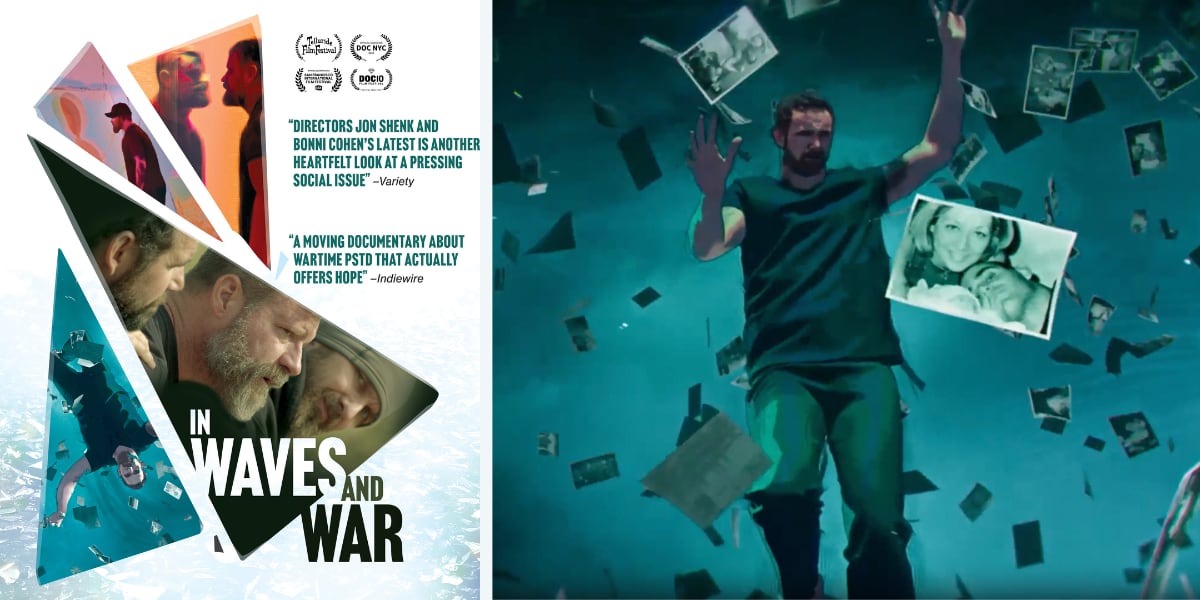By the time the first quote from Homer’s “Odyssey” fades from the screen — “By now, I am used to suffering. I have endured so much in waves and war” — it is clear what kind of story “In Waves and War” wants to tell.
The new documentary from directors Jon Shenk and Bonni Cohen is not about the battles Navy SEALs fought overseas, but the ones they continue to face long after the shooting stops. It’s a film about endurance, recovery and what happens when the toughest people in the world have to confront pain they can no longer muscle through.
Premiering at the 2024 Telluride Film Festival and available to stream Monday on Netflix, “In Waves and War” follows a group of SEAL veterans struggling with the lasting effects of war.
The men in the film carry both visible wounds and invisible ones, and they speak openly about the cost of years spent in combat and separation from family. Rather than centering on the operations that made them legends, Shenk and Cohen’s cameras focus on what came afterward: the sleepless nights, the fractured relationships and the fight to feel whole again.
At the heart of the documentary is the question of whether psychedelic-assisted therapy can help veterans reclaim their lives.
The film explores experimental treatments involving ibogaine and 5-MeO-DMT, two substances currently not approved for clinical use in the United States. The veterans travel to treatment centers in Mexico, where these psychedelics are administered under medical supervision.
For many of the film’s subjects, the treatment represents a last-ditch effort after years of failed prescriptions and therapy. The results, at least on screen, are startling. What begins as a documentary about pain gradually becomes a story about possibility.
The film features several central figures, each with a distinct journey.
Marcus Capone, a former SEAL whose wife describes him as “a monster” after returning from multiple deployments, becomes one of the movement’s leading advocates. Through his nonprofit, Veterans Exploring Treatment Solutions, Capone helps others find the same lifeline he credits with saving his marriage and his life.
D.J. Shipley shares how the weight of two decades in the Teams nearly destroyed the home he built with his wife, Patsy, who herself lost her first husband, Danny Dietz, in Operation Red Wings in Afghanistan.
Matty Roberts, who suffered a devastating arm injury in combat, allows his treatment to be filmed in Mexico, offering viewers a rare look inside the process.
These men’s stories are presented without artifice. They speak directly to the camera, their words measured but unguarded. There is no dramatization of the battlefield and no replay of missions — only the lingering echo of what those years took from them.
What distinguishes “In Waves and War” from other post-9/11 veteran documentaries is its refusal to glamorize the military experience or pity those who served. Instead, it captures the reality of warriors learning to put down their armor.
To visualize trauma and healing, Shenk and Cohen incorporate animation sequences from London-based Studio AKA. The style is fluid, shifting between images of helicopters, night-vision raids and faces dissolving into smoke or sand. These transitions mirror how memory works, especially for those processing trauma. One moment the viewer is in a desert firefight, the next inside the mind of a man confronting his younger self. The effect is haunting, but it helps convey the internal experience of psychedelic therapy in a way words cannot.
While the film hints at the risks of psychedelic treatments, it largely stays focused on the positive outcomes. Viewers never see a failed session or a relapse, and some may question whether the film’s optimism leaves out important context.
But “In Waves and War” is not pretending to be a clinical study. It is a personal one. Its power lies in allowing veterans to speak for themselves about what worked when nothing else did. The emphasis is on hope, not science.
What keeps the film grounded is its honesty about how much healing still takes work. Psychedelic therapy is not portrayed as a magic cure but as a catalyst. The real effort begins afterward, when the participants return home and attempt to rebuild relationships and find purpose again. The film shows that facing trauma can be just as grueling as any deployment, but it is also an act of courage.
The title, borrowed from ancient poetry, fits the story perfectly. “In Waves and War” captures how trauma recedes and returns like the tide, and how surviving it requires both endurance and surrender. For veterans who have spent their lives mastering control, surrender can be the hardest part. Shenk and Cohen’s film understands that, and it treats every subject with respect and restraint.
This is not a political documentary, nor does it wade into debates about drug policy. Its focus is far more human. It asks what happens when warriors who have done everything right still cannot find peace, and what they are willing to risk to get it.
Whether psychedelic therapy becomes mainstream or remains controversial, the courage it takes for these veterans to seek help is undeniable.
“In Waves and War” stands alongside other post-9/11 works like “Restrepo” and “Of Men and War,” but with a quieter tone. It’s less about combat and more about the long, uneven path toward recovery. By the final frame, it leaves viewers not with a sense of despair but with a flicker of hope.
Healing, it suggests, might be possible even for those who thought they were beyond saving. For service members and veterans watching, that message may be the most important mission of all.
Observation Post is the Military Times one-stop shop for all things off-duty. Stories may reflect author observations.
Read the full article here





